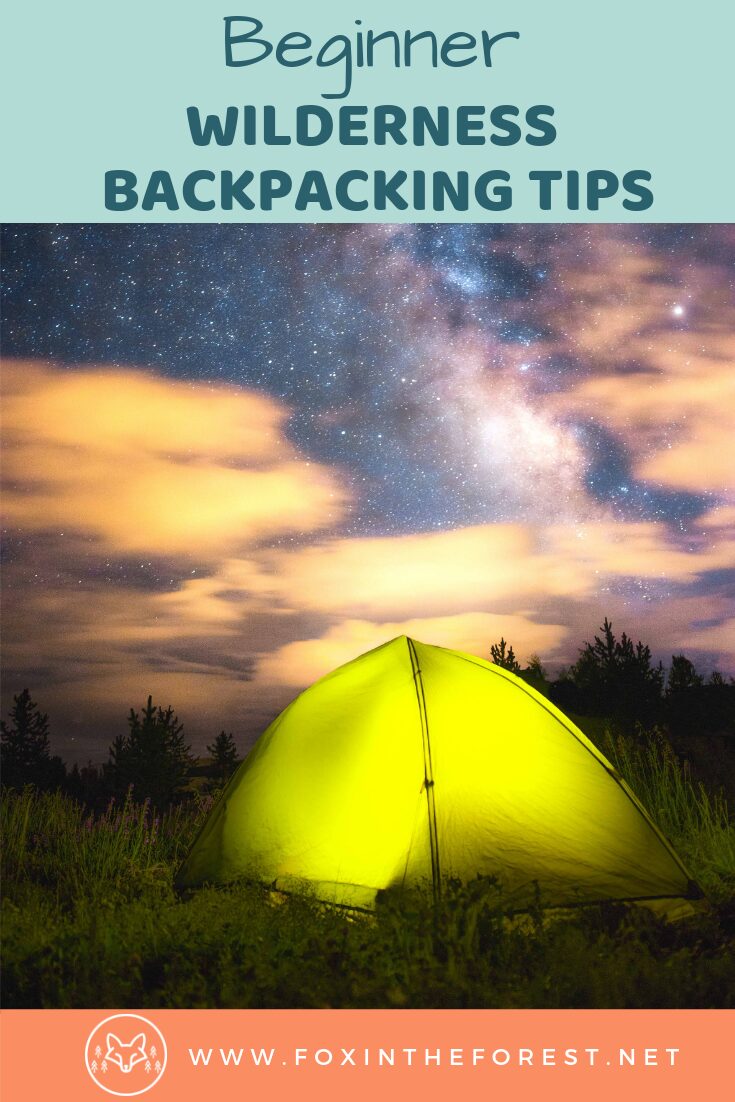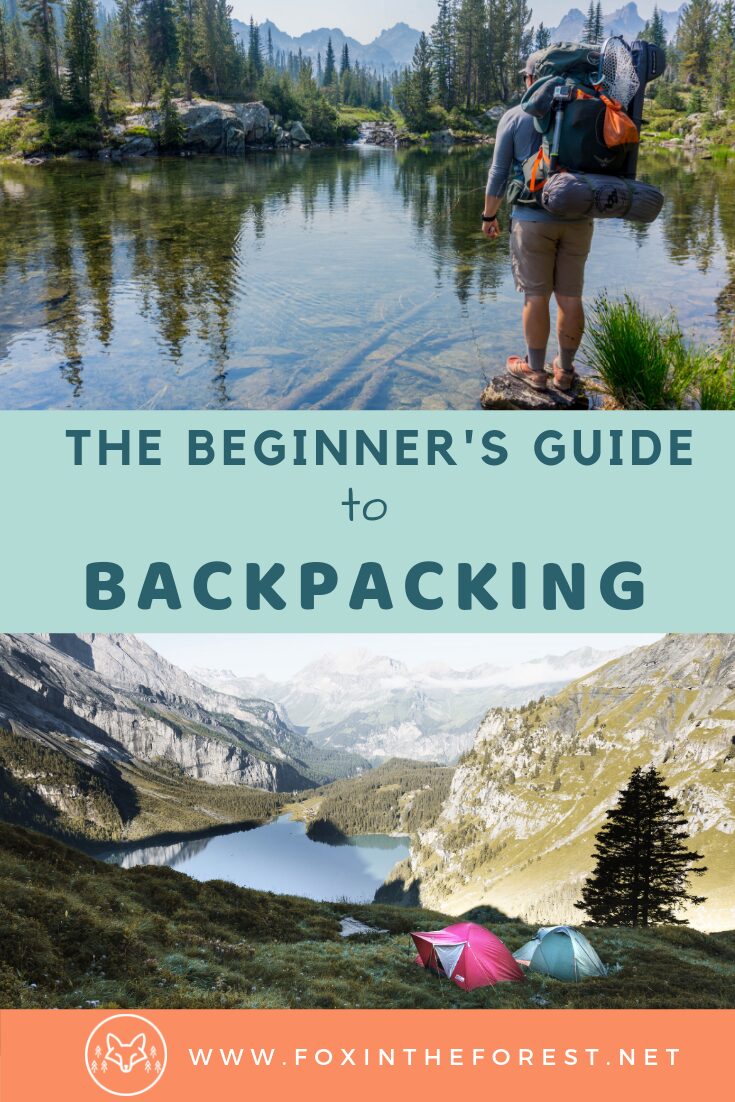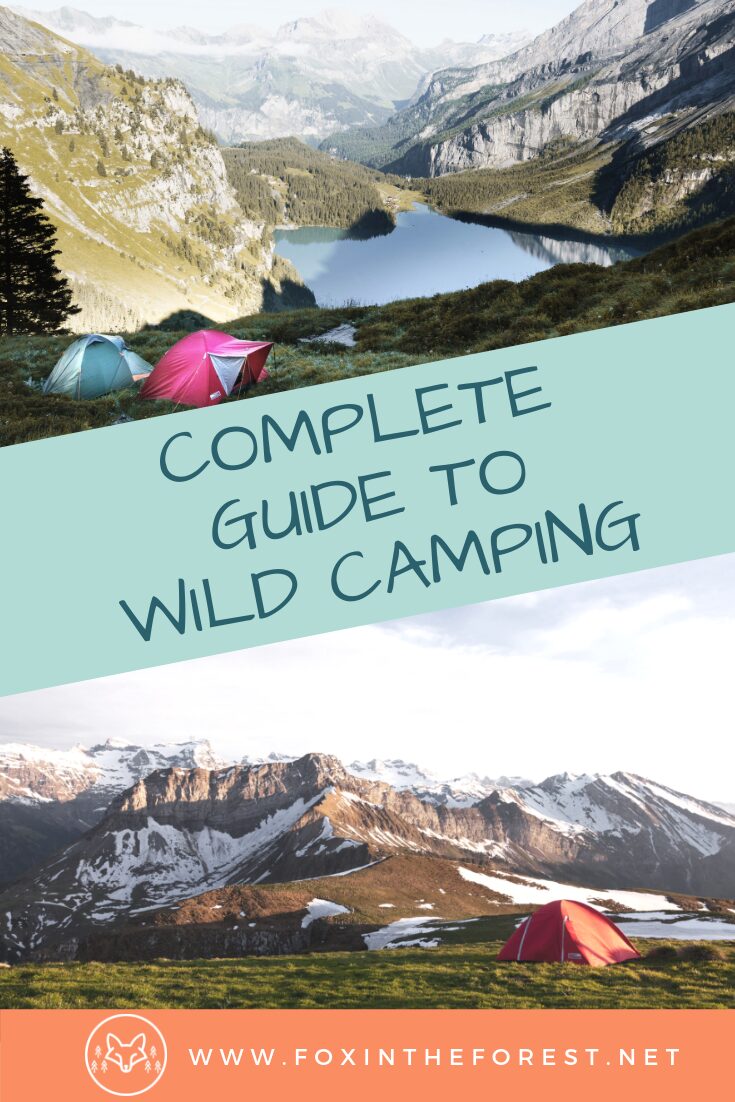Last Updated on November 5, 2021 by foxintheforest
Hiking into the wilderness with your house on your back connects you to the land. There’s a magic in bringing only the essentials and enjoying a night under the stars without the distractions of modern life. The challenges, rewards, and isolation are what make backcountry camping, or backpacking in the wilderness such an incredible experience. But where do you start? These backpacking tips are designed to help you transition from a hiker to a backpacker. Experience backcountry camping with this guide to backpacking for beginners.
Preparing for Your First (or 100th) Backpacking Trip
Before you hit the trail for your backcountry camping adventure, make sure you’re prepared with a few handy beginner backpacking tips. First and foremost, you want to develop a trip plan. Essentially, a trip plan enables you to stay organized while also providing someone with knowledge of your whereabouts should something go wrong.
Complexities and details of trip plans vary based on the intensity of the trip, but at the very least they should contain where you are headed, what you are doing, and when you expect to be back. Always leave your trip plan with a trusted friend or family member and give them instructions on what to do in case of an emergency.
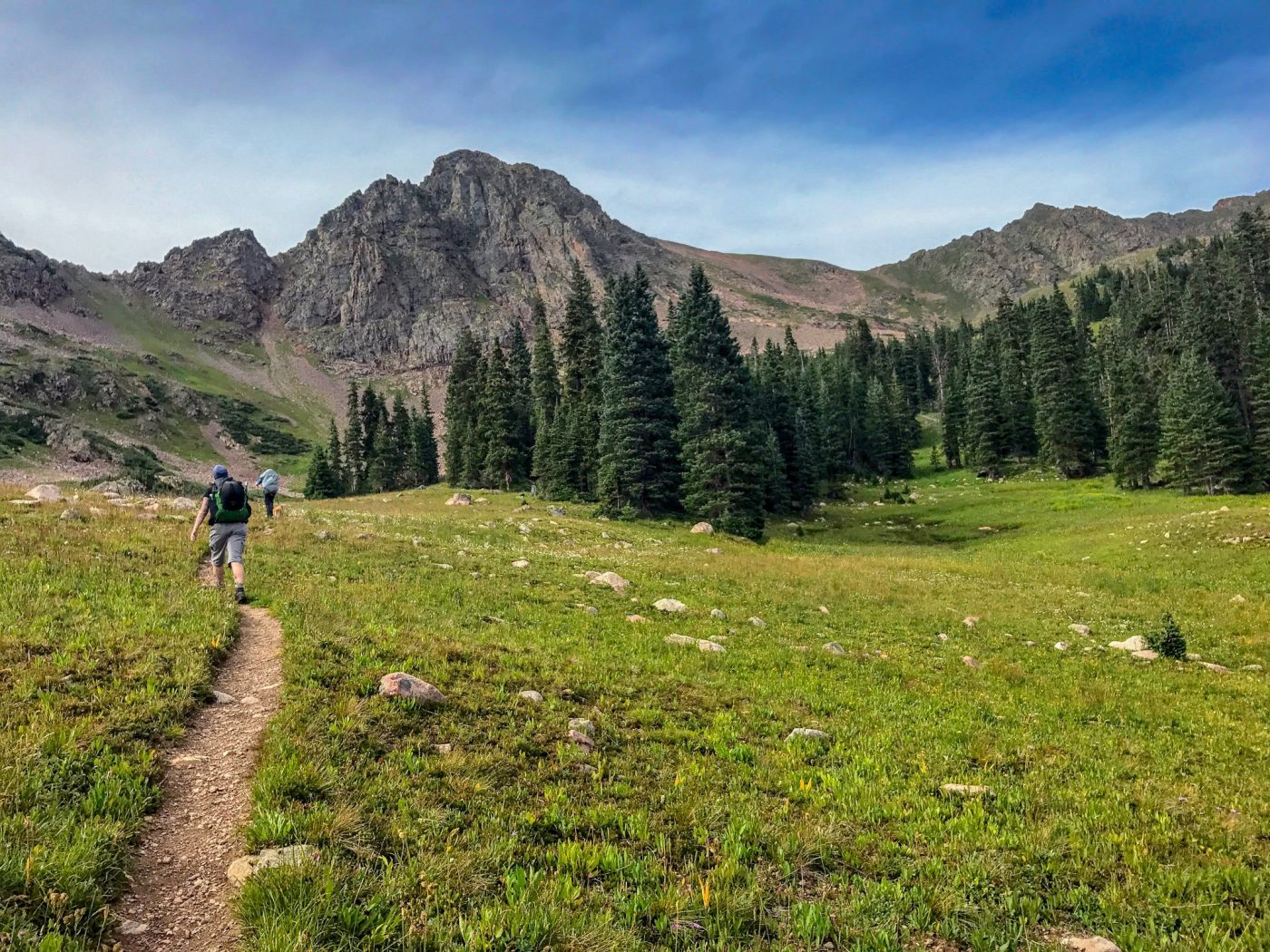
How to Discover the Perfect Backpacking Route for Beginners
I’m sure you would love to know how I find all of these incredible off-the-beaten-path backpacking spots. Truth be told, I’ve honed my system in over the years. I started with simple, more popular routes like various segments of the Colorado Trail. What I discovered in doing this, was that I really didn’t like all of the crowds.
First, keep in mind that virtually any trail (barring permits and overnight parking at the trailhead) can be a backpacking route. Typically, I look for an area of interest, such as an alpine cirque or remote peak. Then I’ll find a route, either on or off the trail that will get me to that point. I started with small trails at about five to seven miles each day and slowly made my way up to the 12 to 15-mile trails I can handle today. The key is to figure out what it is you want to see, then go see it. Here are a few beginner backpacking tips to keep in mind when you are planning your route:
- Check topo maps for water sources and camp spots. You want to make sure there is flat ground where you would like to camp.
- Make sure you don’t need any permits. Permits often require advanced planning and a few extra dollars. Be sure to have your permit handy in a zip lock baggy and follow all wilderness regulations
- Be prepared to pack out your waste! Some wilderness areas require you to poop in a bag, so be prepared.
- Note any special food requirements. Certain areas require you to use bear canisters (basically, giant, heavy, plastic containers) to protect your food.
- Make sure your vehicle can make it to the trailhead.
Beginner Backpacking Tip: Start with established routes, such as popular loops and well-known backpacking destinations. This makes information such as water and camping locations easier to find.
How to Transition from Hiking to Backpacking
Backpacking a trail varies from hiking a trail, simply because you’ll be carrying more weight. This means you’ll also consume more food and water while you’re on your journey. My Ultimate Guide to Hiking gives you an in-depth look at how long various terrain takes to cross. When you’re backpacking, you’ll want to build in a little more fluff with your timing, especially when you’re a beginner backpacker.
The first backpacking tip to keep in mind is where to find that high quality, life-giving liquid, water. Even on a short backpacking loop, you’ll want to be aware of where to fill up on water. Look at your backpacking route beforehand using a topo map. The blue lines indicate water such as streams and rivers. Depending on where and when you are traveling, those water sources may be dry for certain parts of the year. Read recent condition reports to get the most up to date information.
Sometimes, you’ll be camped at a dry spot where there is no deliciously cool spring to slurp from. In this case, you may want to consider your last fill-up point and bring an extra water bottle for cooking and drinking in the evening. If you’re backpacking in the desert you may need to carry an excessive amount of water or leave water caches on your way out. Be sure to label these with the date, name, and you’re planned return time so someone doesn’t accidentally take it.
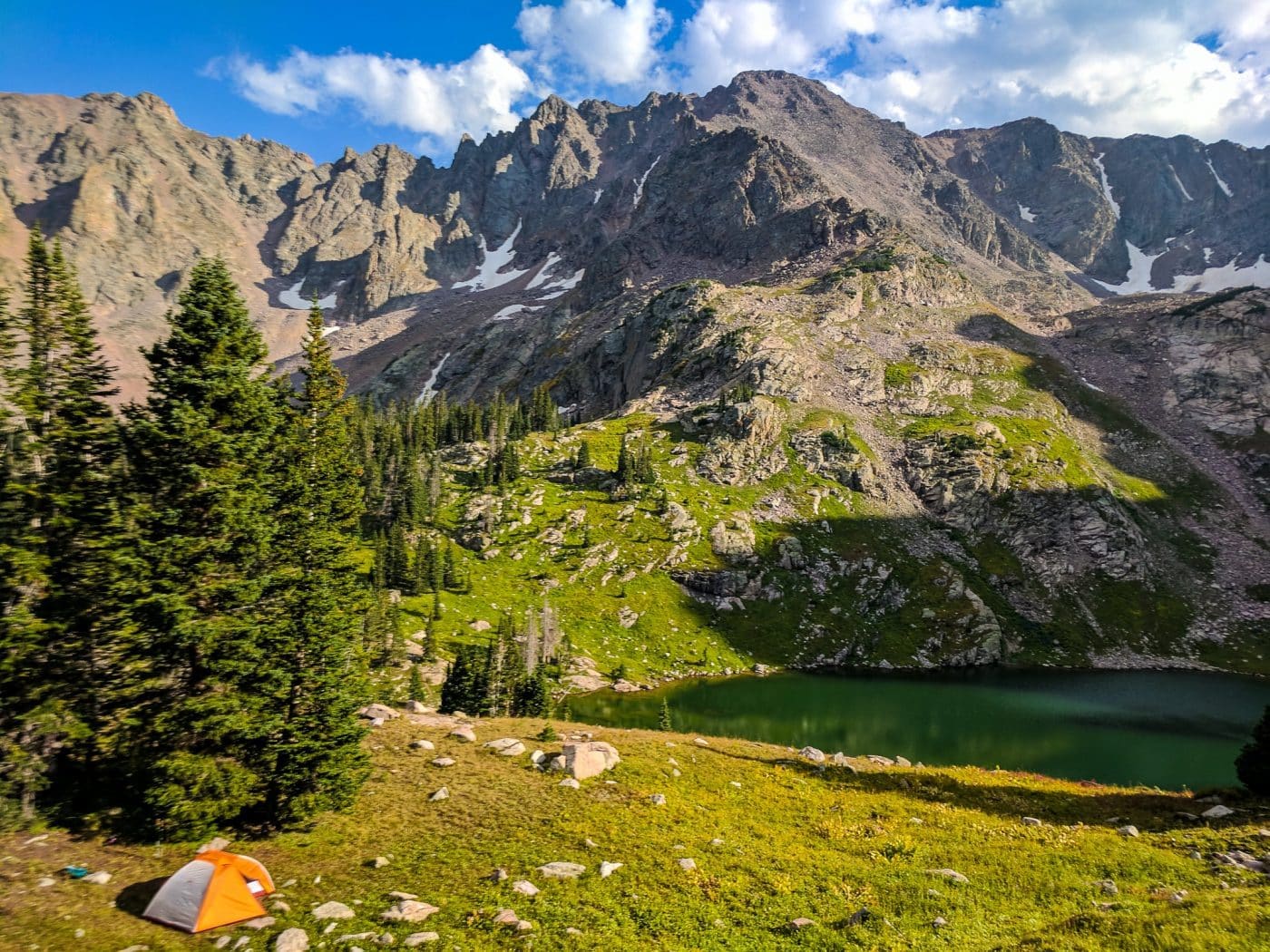
Fit Your Pack Like a Pro
The number one cause of pain while backpacking is a poorly fitted pack. First, you want to be sure that the pack sits flush to your back. To do so, loosen all the straps on your pack. Next, put your arms through the shoulder straps and lean forward. Then buckle your hip strap making sure that the strap goes directly across your hips. Tighten your hips strap first so all the weight sits on your hips. Lastly, adjust your shoulder straps by cinching them tight against your body then using the top load strap to make sure the back of your pack sits flush with your back. You don’t want any gaps and you want most of the weight on your hips.
When you pack up your gear you want to put all of the heavy gear closest to you to avoid having unbalanced weight in your pack. Put heavy items toward the middle of your back when possible in order to balance your pack. Lastly, keep items such as snacks, maps, GPS, hat, sunscreen and any layers you may need throughout the day in an easily accessible compartment.
What to Pack for a Backpacking Trip
When you first begin your backpacking journey, you’ll immediately notice two things. One, lightweight gear is astronomically expensive. And two, you’ll want to bring everything and anything. Let’s talk about what you really need for your big trip.
There are a few ways to get around the high cost of gear. First, use what you have. If you’re missing a key piece of equipment, such as a sleeping bag, tent or pack, consider renting it or borrowing gear from a friend.
Avoid packing the kitchen sink. Keep in mind you’ll carry everything you have. If you don’t have ultralightweight gear, expect your pack to weigh between 25 to 30 pounds for a weekend away including your water. Therefore, you’ll only want to bring what you need. Here’s a basic beginner backpacking gear checklist for your backcountry camping adventure.
- Water and water bladder/water bottle
- Map, compass, and GPS
- First Aid kit with blister kit
- Food. You’ll be burning around 6,000 calories a day so focus in foods that are high in fat as well as carbs for quick energy.
- Water filter
- A backpacking pack, 40L-50L is perfect for an overnight
- A backpacking tent
- Sleeping bag
- Sleeping pad
- Sunscreen, hat, sunglasses
- Lighter
- Extra layers
- additional items such as a beanie, headband, Buff, or light gloves
- Rain gear
- A trash bag to line your pack or a rain cover for your pack
- Change of socks
- Mess kit
- Toothbrush
- Toilet kit with a shovel, toilet paper, and sani hands. Wag bags if needed
- Hairbrush
- lip balm
- Any other toiletries such as prescription meds and contacts
- headlamp with extra batteries
- knife
- Emergency beacon (optional but strongly recommended)
- Trekking poles. These are real knee-savers and the going gets tough with a heavy pack
- Camp sandals (optional)
- camping pillow (optional)
- portable device charger (optional)
- Urinary funnel. Ladies, it’s a game changer.
Beginner Backpacking Tip: It’s okay if you don’t have all the latest gear. Many local gear shops are happy to rent you a backpacking setup. You can also borrow from a friend. Get creative and use what you have, if you find you fall in love with backpacking, consider investing in the gear later.
Check out the ultimate backpacking gear list, including recommendations for beginner backpackers.
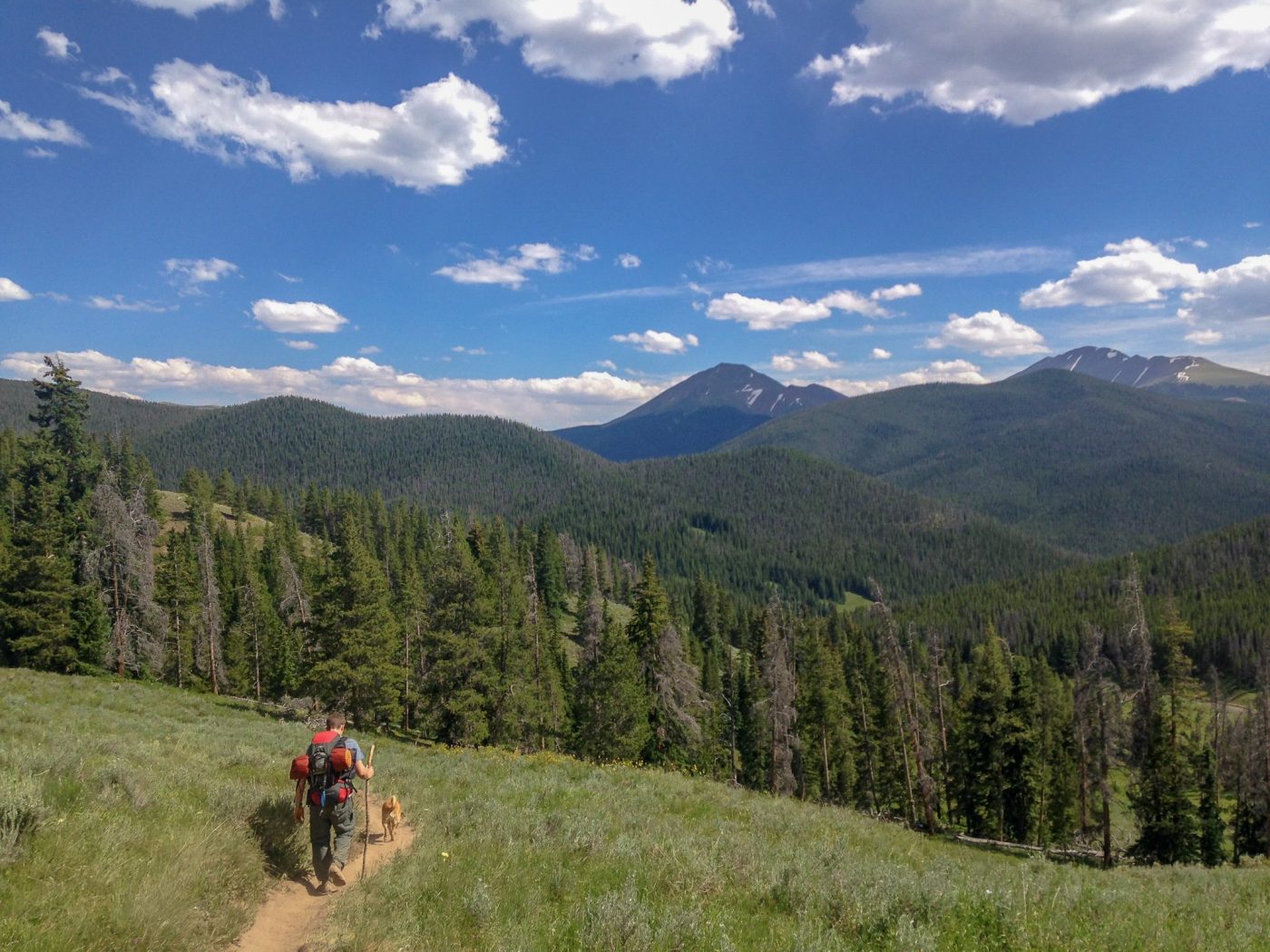
The Best Gear for Backpacking
If you’ve backpacked a few times and you’re totally addicted, it makes sense to throw down some money on gear. The first thing you’ll likely want to invest in is a well-fitting backpacking pack. Next, snag the ultimate sleep system. A comfy sleeping bag, sleeping pad, and backpacking tent are essential for a cozy night’s rest in the backcountry.
Comfort is key in the backcountry and that starts with your clothes. Footwear is extremely important, as are the clothes on your back. Avoid cotton at all costs. I like to bring a spare pair of socks with me, as well as a few extra layers in case it gets cold. If I’m out for several days, I’ll bring a change of clothes for sleeping, simply so I don’t get my sleeping bag dirty, causing the natural pores of the fabric to clog.
For more information on backpacking gear see these posts:
Training for Backpacking
Just like you would train for a big hike, consider training for backpacking. It is important to have a strong core, sturdy legs, and shoulders to bear the burdens of the trail. The best way to train for backpacking is to mimic real-world conditions. Take your pack to the gym and load it up while walking on a treadmill (don’t forget to go uphill and downhill if you can). Train for the downhill, which is hard on your knees by doing squats and lunges. Or take your workout outside. Building up endurance-based cardio and overall muscle strength will enable you to go further, longer.
Check out this post about training for your big backpacking trip (coming soon).
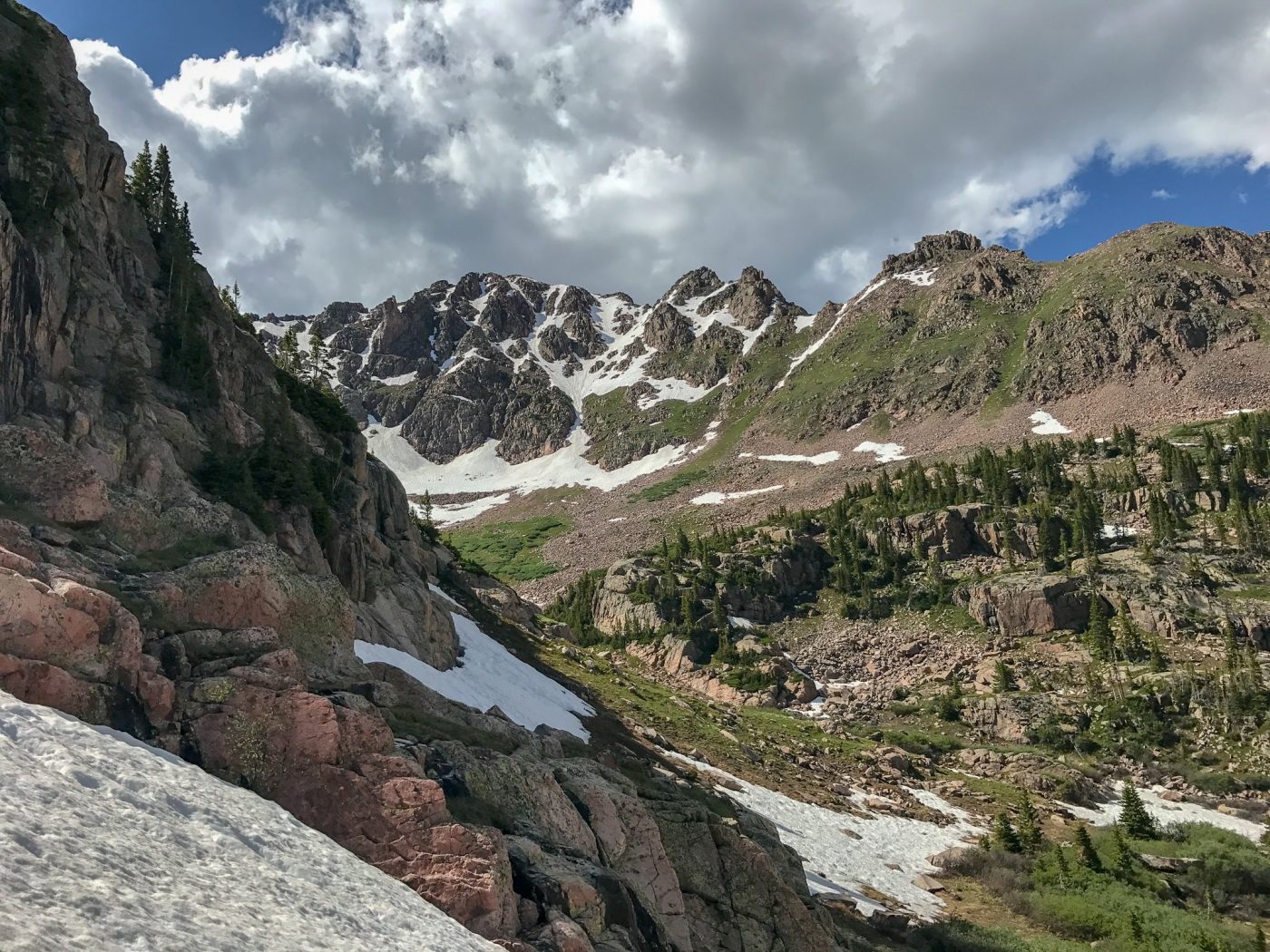
Leave No Trace on the Trail
It doesn’t matter if you’re day hiking or on a thru-hike, always practice Leave No Trace Principals. With more and more people getting out into the wilderness, many of our outdoor spaces are feeling the pressure of human impact. As a first-time backpacker, do your part and educate yourself about Leave No Trace. Be sure to pass that knowledge on to others. Pack out all of your trash, including your dirty toilet paper. You can create TP disposal bag with a plastic baggy, some duct tape to cover the bag and sprinkle a little baking soda in there for the smell.
Be sure to camp, cook, and do your business 200 feet (70 adult steps) from any water source or 100 feet from the trail. Don’t camp in any pristine wilderness area, instead utilize previously established sites. If you’re a ways from the trail, vary your route to and from your campsite to avoid creating a social trail. Never feed wildlife and don’t encourage your dog to chase the wildlife.
Beginner Backpacking Tip: Bring a bag for trash and a bag for recycling. Do your best to do your part. If you see trash from others, pick it up and leave it better than you found it.
What to Do About the Poop
Going to the bathroom outside can make many folks uncomfortable. It’s ok, I used to have stage fright too before I started spending every minute of my free time outdoors. Be sure to use the bathroom off of the trail and at least 200 feet (70 adult steps) away from a water source. Simply dig a hole six inches deep (four if you are in the desert) and pop a squat. Many people who are not used to squatting can feel uncomfortable, that’s ok. Remind yourself to relax and take your time. Always use hand sanitizer when you’re finished.
Us ladies have special considerations while dealing with number one. Peeing in nature is more of a pain for us ladies. I’ve solved the problem by using a female urinary device. I’ve gotta say, it changed my life and I’m happy to report that peeing is no longer a problem. If you still squat, consider using an old bandana as a pee rag and let it dry in the sun by attaching it to your pack.
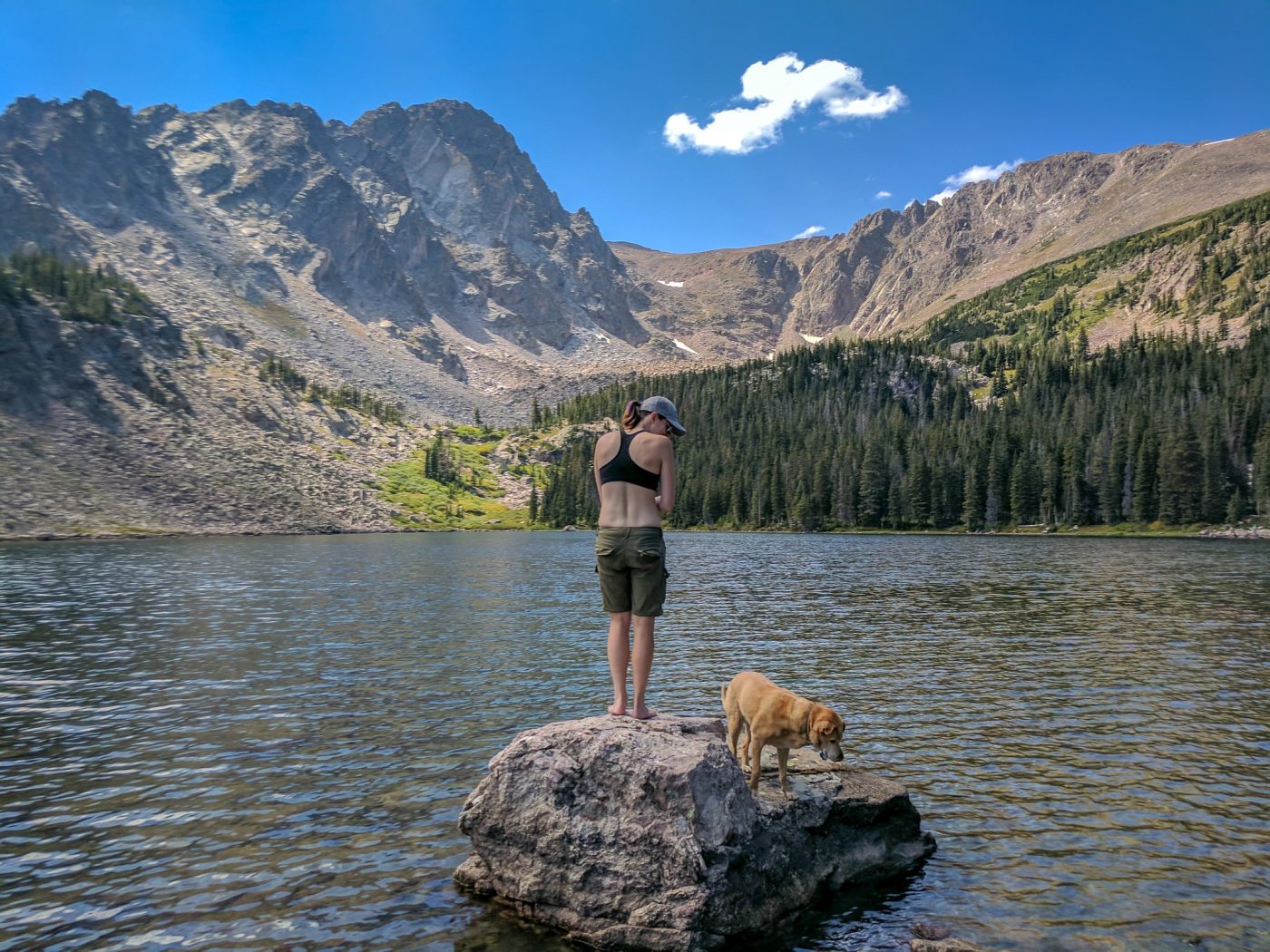
Beginner Backpacking Tips to Finding the Perfect Camp Spot
Before you head out it’s important to note any areas where there may be camping. Look at a topo map and find any flat spots (where the lines run further apart). Typically along established trails, you’ll see campsites made by previous backpackers. Opt to use those if they follow Leave No Trace Principals (200 feet from lakes and streams please!). This will minimize further impact on the environment. Look for a bare patch to pitch a tent, don’t pitch on vegetation. Also, be aware of any dead trees in the area, try to avoid pitching your tent where there is a danger of dead treefall or rockfall. Here are a few additional tips for finding the best camp spot while backpacking:
- Take note of the wind. If you can, use a cluster of trees to protect yourself from the wind, the view may be nicer elsewhere, but it isn’t worth dealing with wind slapping your tent all night
- Valleys tend to be cold and ridges tend to be windy. Opt for a spot that’s in-between if you can.
- If it’s cooler out, consider a south-eastern site. The morning sun will heat up the tent.
- Seek shade from the heat.
Beginner backpacking tip: Be sure to read trip reports and look at a map before you head out. The last thing you want is to hike for the entire day, only to find out that there is no suitable place to camp!
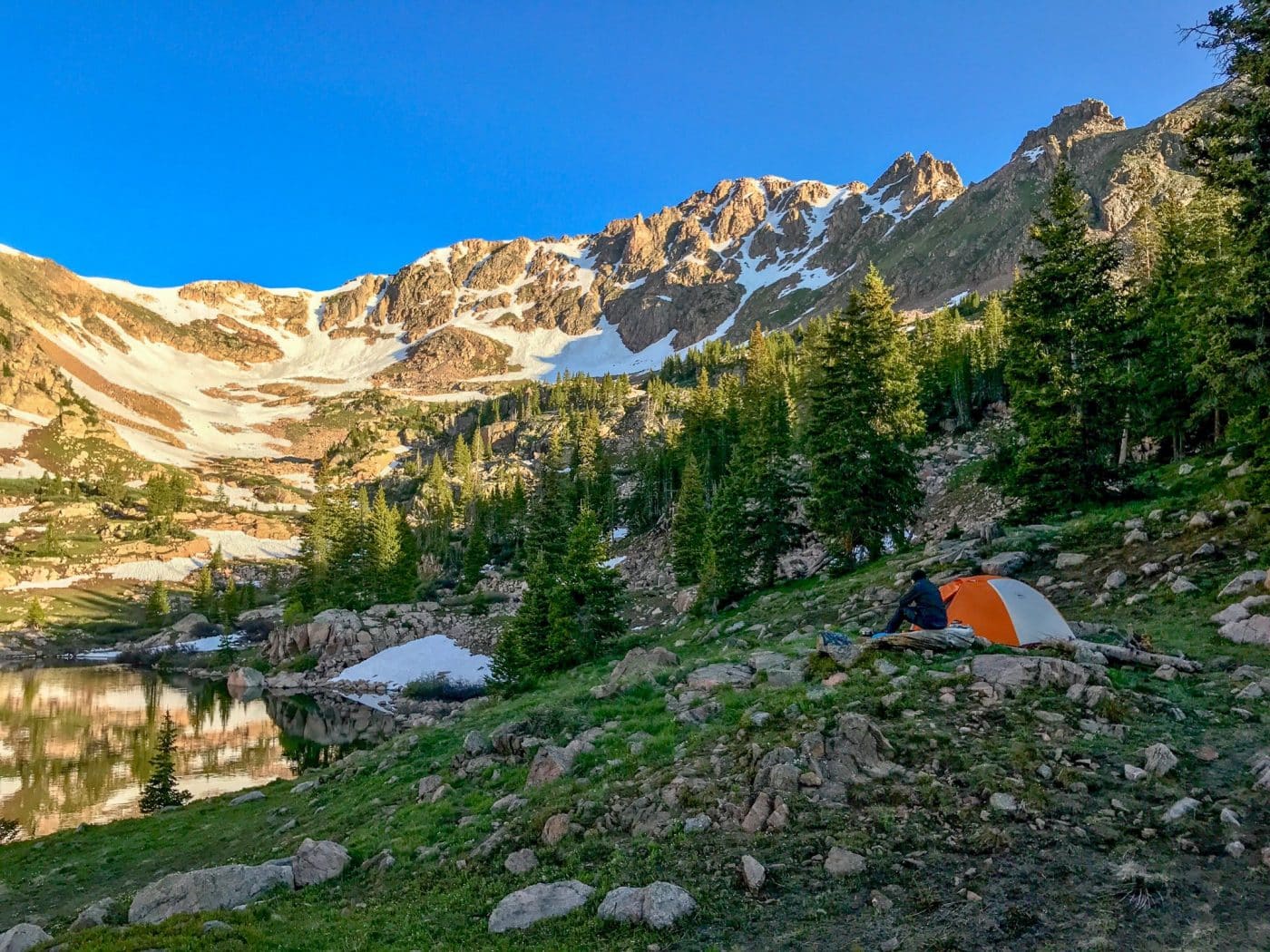
Avoiding Wildlife: Protect Yourself from Bears and Other Critters
Nothing ruins a backpacking trip like a chipmunk that got ahold of your food bag. Be sure to keep all scented items (this includes deodorant, Chapstick, toothpaste, etc.) in odor-proof bags. If you’re traveling in bear country, take extra precautions and use a bear canister.
Here in Colorado, I typically put my food and trash in separate odor proof bags, then place my food in a dry bag that I hang in a tree. This keeps both black bears and ground critters out of my food stash. Trust me, I’ve left the bags laying on the ground and pika chewed through both the dry bag and the odor proof bag to get a nibble on my dog’s food!
Are you a woman that wants to be more independent in the wilderness? Want to hike tougher trails and tackle burly backpacking routes? Check out my e-book for more information on how to become a pro lady dirtbag!
What to Expect on Your First Overnight on the Trail
The thought of sleeping in a tent, deep in the wilderness might sound a bit scary. To be honest, it’s a bit unnerving at first. That’s ok. Try to relax. Earplugs really helped me on numerous occasions. Remember, the more you sleep outside the more comfortable you’ll feel. It’s ok to have a rough first night so don’t get discouraged. Beginner backpackers and seasoned backcountry travelers all struggle with sleeping soundly outside from time to time.
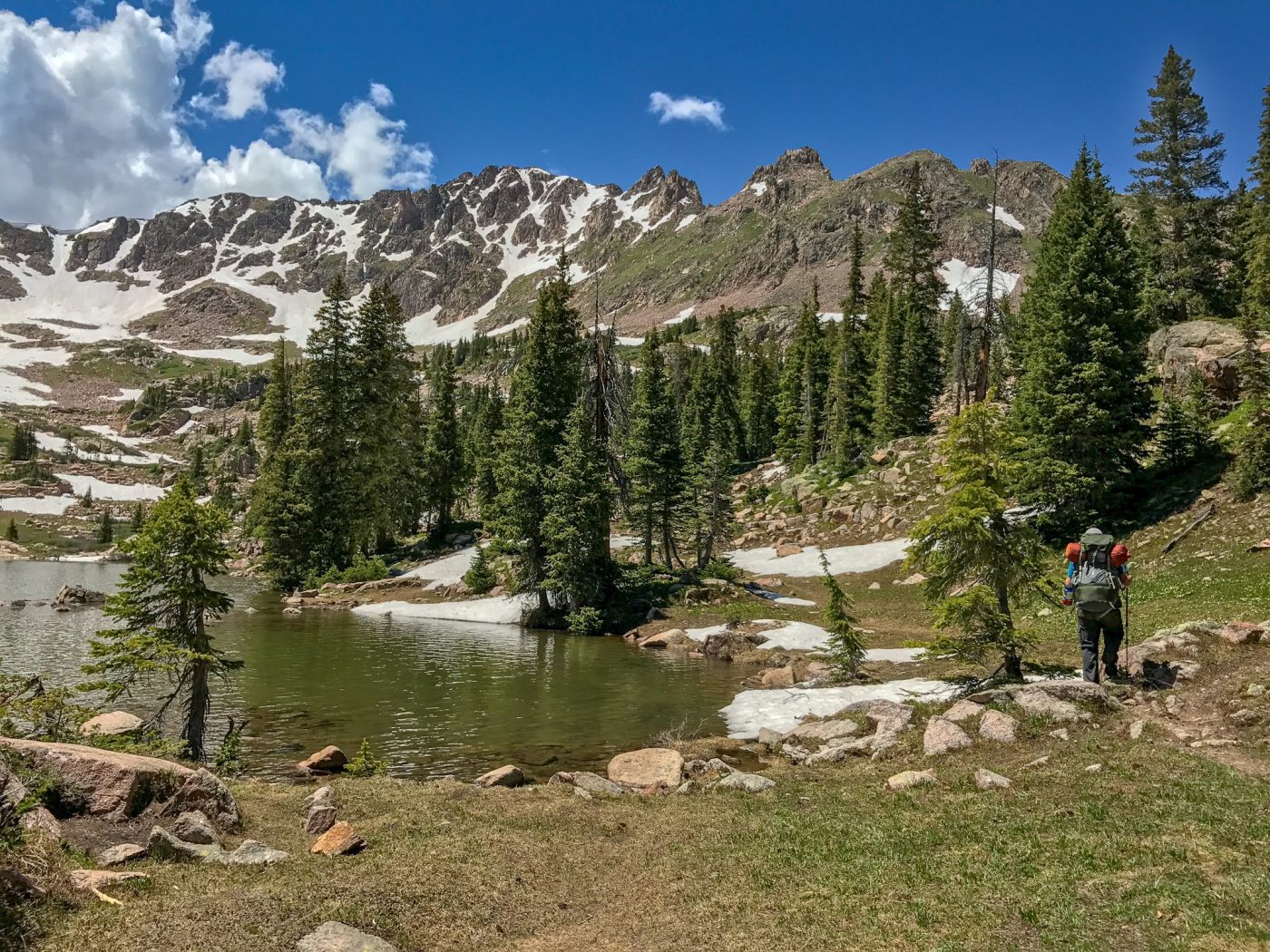
What Do You Eat When You Backpack
I’m a total food-slut on the trail. I like to aggressively dig into all of my friend’s backpacking treats and learn all of their secrets. In doing so I’m constantly learning new and innovative ways to eat on the trail. Over the years, I’ve determined that the best foods for me are the ones I make myself. I’ve created an extensive look at how to prepare and make your own backpacking meals. If cooking isn’t your thing, check out some companies like Good to Go that create delicious backpacking delicacies for your trail dining.
Backpacking with a Dog
It doesn’t get better than backpacking with your bestie. Many four-legged friends love to backpack and both dog and human feel a closer connection. When you take your dog, you can either train them to wear a pack too or carry their food. Nina, my adventure-pup is a bit older, so we carry her supplies. Dogs generally do alright on their own, but be prepared to share your pad, sleeping pad, whatever. A simple Z-lite sit pad by Therm-a-Rest makes a great sleeping pad for your pup. We noticed that Nina stopped invading our space once we bought her one.
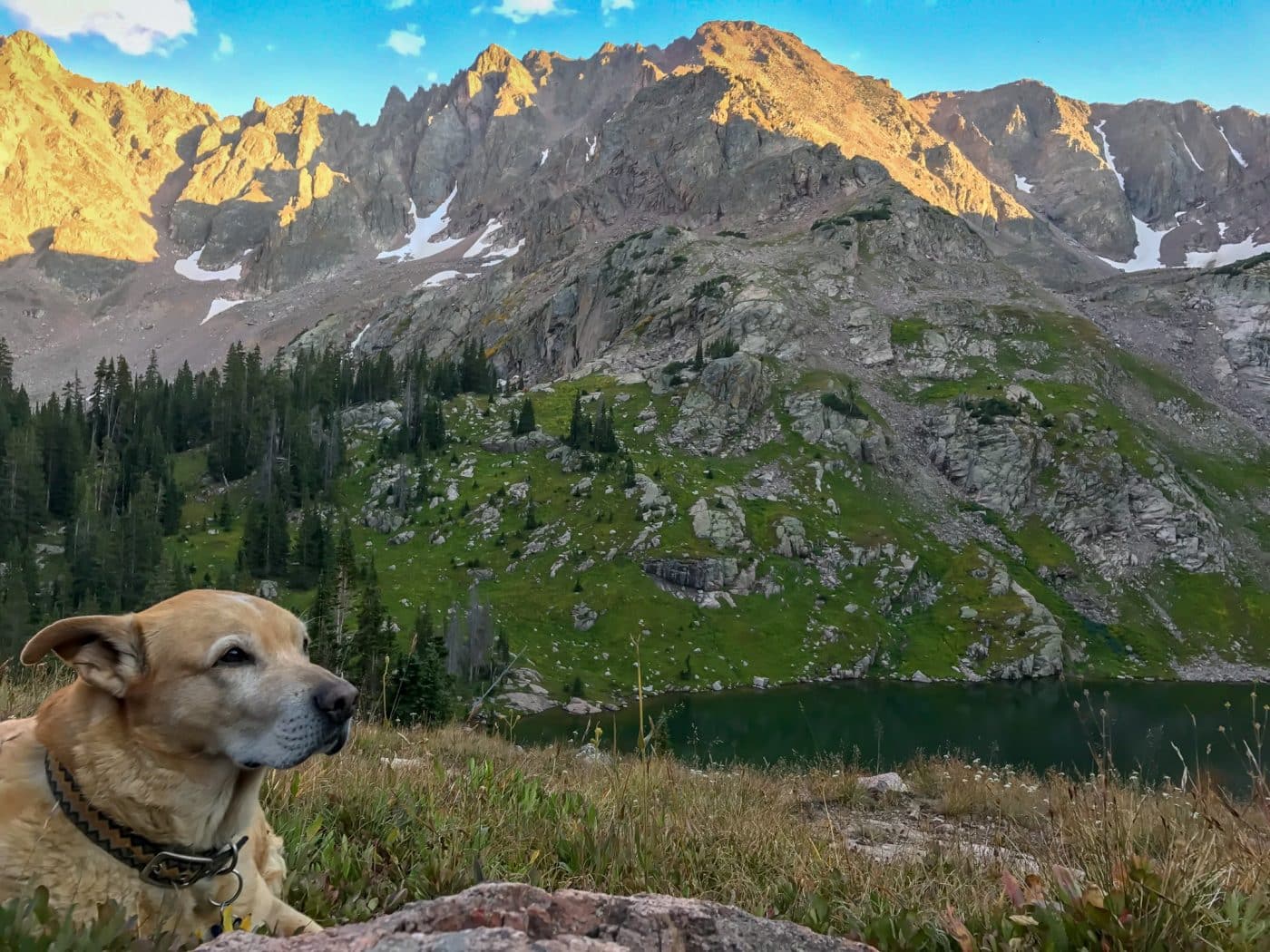
Be sure to keep an eye on your dog’s paws. Dog’s don’t have boots, but their feet take a beating over rough terrain. Carry this simple first aid kit can help your pup’s paws stay in trail shape.
Read: How to successfully backpack with a dog.
Backpacking Off Trail
Off-trail, bushwhacking or cross-country travel is the ultimate feeling of being in the wilderness. You and you alone are responsible for navigating and staying safe. There is no trail to guide you. Although it is a romantic notion to simply be wandering the wilderness, it is not to be taken lightly. This is a more advanced backpacking technique and you should have solid navigation skills before attempting an off-trail backpacking trip.
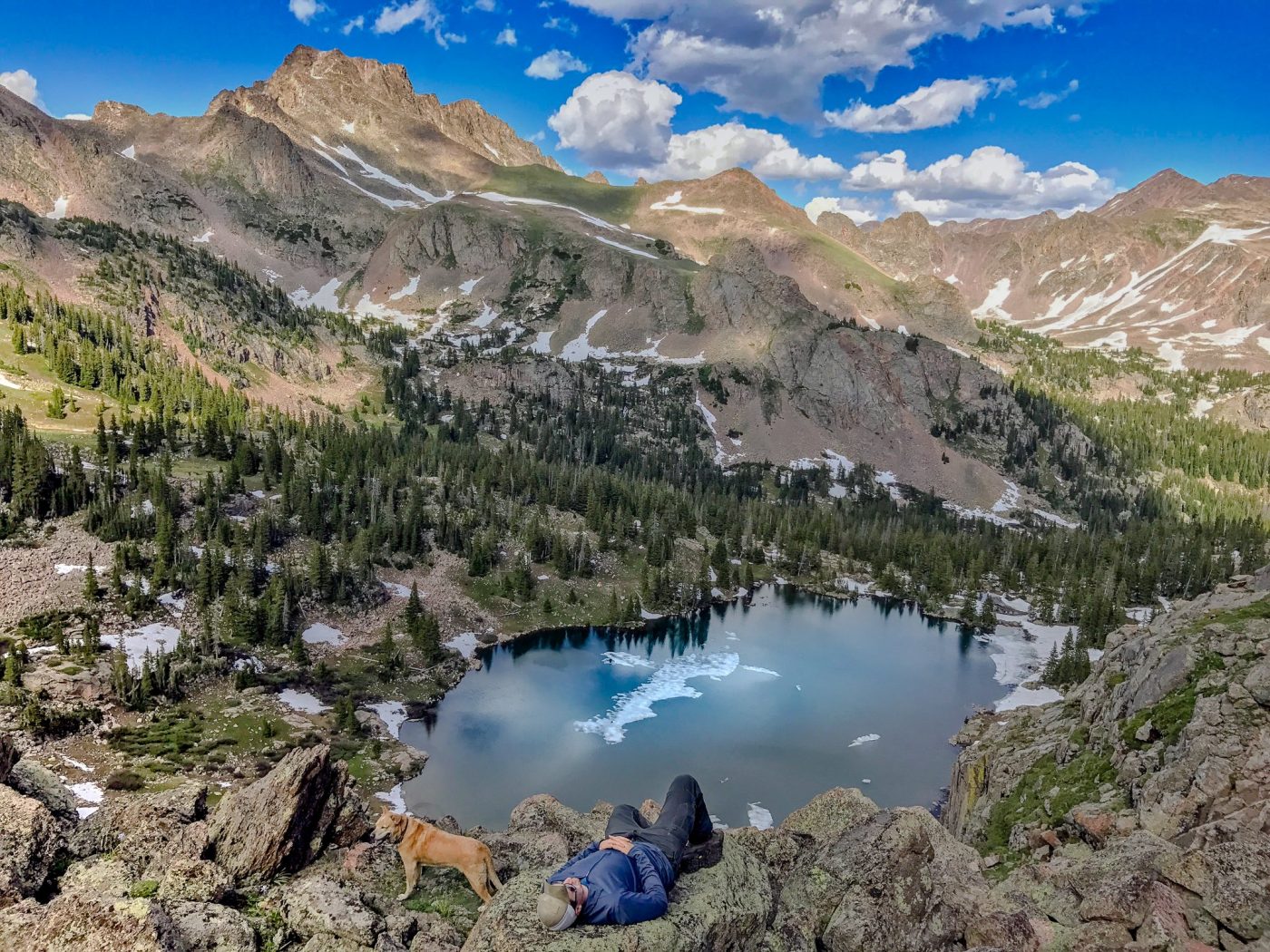
Off-trail travel involves a complex understanding of navigating and minimizing your impact on the virgin environment. Prior to setting out, have a complete understanding of how to take a bearing both off of a topo map and in the field. Be sure to know how to cross-reference this with your GPS device. Also, don’t ever have a fire or camp on top of vegetation when traveling off-trail. Instead, camp in barren patches, such as under a tree, and avoid having a campfire, which could scar the landscape.
Additional Backpacking Tips for Beginners
Backpacking and wilderness camping offer a great way to truly immerse yourself in the wild. There are a few important backpacking tips that will help you get the most out of your backpacking adventure.
- Save your phone battery by turning on airplane mode and turning OFF location services. Only turn on location services when you want to check your GPS.
- Batteries don’t like to be cold. Sleep with your batteries to save juice.
- Keep a hot water bottle at the bottom of your sleeping bag for added warmth (for more warm tips, check out this post).
- Sleeping with your clothes will also keep them toasty in the morning.
- Make a backcountry pillow with your puffy jacket and a Buff
- Bring one small indulgence. It could be a book, flask, or a backpacking chair. Sometimes the little things can really help after a hard day on the trail.
- Don’t focus on mileage and big gains. Instead, accept that you will be hiking with a heavy pack all day and soak in the beautiful scenery.
- Use a quick-dry face towel to give yourself a quick sponge bath. Hit all the essential bits (face, pits, butt, and privates, in that order!)
Enjoy the wilderness in a whole new way by embarking on your first backpacking trip. These backpacking tips aim to get you ready for your backpacking adventure. So hike on with your house on your back and get out there!
